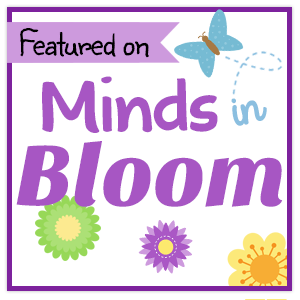The debates are over, and Election Day is around the corner. On the friendship front, I'm proud to say that I haven't unfriended anyone on Facebook yet because of ridiculous political statements that I may or may not agree with. No family members have been asked to resign as my relatives either. I've heard though that differences in political opinions have caused quite an uproar for many other people. I generally like to view people as who they are deep inside rather than as a shallow picture of their political viewpoint. If you're my friend, I tend to watch what you do in real life rather than listen so much to what you post on social media. Likewise with the candidates. I've been watching both for years. I know. Whatever they say during the debates is kinda like reality TV for me - entertaining, but not really real.
Here's what concerns me, teachers. Lots of people are talking about the election and about one candidate or the other not in a very kind manner. And count on this: the children are listening. They are like sponges, soaking up everything they hear. Even when you would swear they aren't paying attention. They might miss hearing how to divide fractions, but they will not miss one word of their families' discussions about the candidates. And then...all that information and misinformation shows up in your classroom.
There's a great old country song by Aaron Tippin (1991) that really says it all. If you don't have strong values of your own, others can very easily fill that void inside you with whatever nonsense or harm they're pushing. "You've got to stand for something, or you'll fall for anything." You have a lot of power right now in the lives of your students. Power to help them find what's really important to them, power to show them how they have a choice when issues are presented to them, and power to help them see that their opinions matter. There's a great video on You Tube where Aaron Tippin is singing to his son about the need to stand for something and not to back down, and it later shows the boy making a great decision to back away from "stranger danger". You might want to share it with your students. You've Got to Stand for Something
I can pretty much guarantee that your students' families are discussing the debates now. I'd love to share a couple of ideas with you that I used in my classroom for many election years and in non election years too. It's a kind of fun and easy intro to debating, and I've used it with second through sixth graders. These two activities can also be great prep for persuasive writing.
The first idea is called the "Vote With Your Seat" activity. My kids often called it the "Stand Up Sit Down". First ask everyone to stand. Then announce the topic for debate. For example, "If you think our school lunches are perfect the way they are, sit down." Some might sit down. Keep refining the position statement. "If you think the way vegetables are served in our lunches is ok, sit down." A few more may sit down here. Then "If you think that we should not have a salad bar (we don't), sit down." You could add a couple more refinements, or stop after three. The remaining students could then be asked to briefly meet and then tell the class why they think having a salad bar would improve the lunches in your school.
The second activity is called "Vote With Your Feet". This one is very effective at showing the wide range of thoughts that people actually have about a topic. Using the same salad bar topic, start with having all students stand together in the middle of the room. Say, "If you think we should have a salad bar in our cafeteria, move to the left. If you think we should not have a salad bar, move to the right. If you're not sure or don't care, stay in the middle." Then ask the first person to the left to state why he/she thinks having a salad bar is a good idea. (Just a sentence or two.) Ask the first person to the right to state why it is not a good idea. Then after each side has spoken, announce "Vote with your feet! Move closer to the side you now agree with or stay where you are." I think you'll be surprised at the movement as you continue this activity with a new speaker from each side. Continue until everyone who would like to speak has had their say. Writing an opinion piece on "Why a Salad Bar Would be Good (Bad) for our Cafeteria" should now be a piece of cake! Or a slice of tomato.
The most important thing to remember is that the topics should be real ones and of importance to your students. Raising or lowering taxes probably isn't of major importance to a ten year old unless family members have already pointed out why, but I'm guessing many of them will care whether or not their soccer field is turned into a salad garden. I've just completed a set of debate task cards to help you get the conversation started with your elementary students, and have added it into my Election 2016 Bundle. If you have already purchased the bundle, just download it again for free! More goodies to be added through January to the bundle as we move through the inauguration and add a new Vice President!
You can learn more about the bundle by clicking on the cover here:
And remember, no matter who you are voting for, you're still my friend!


































